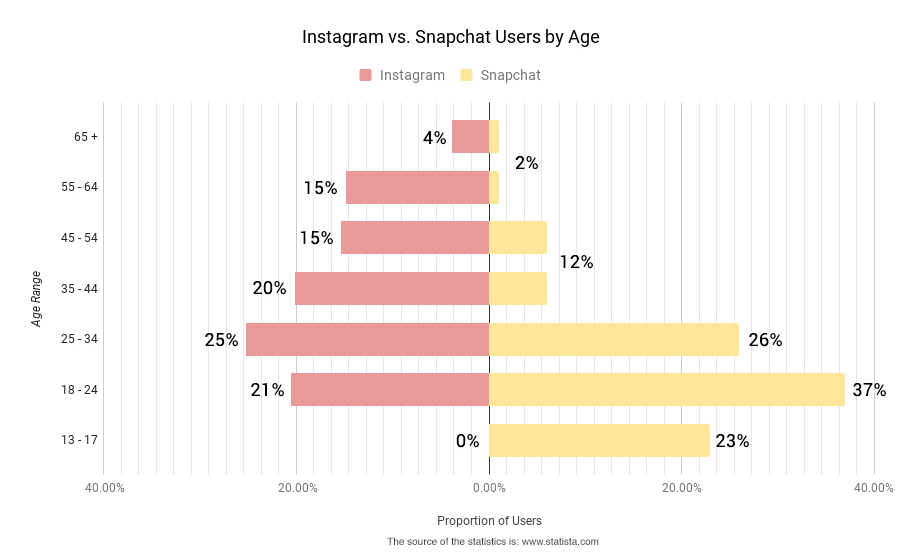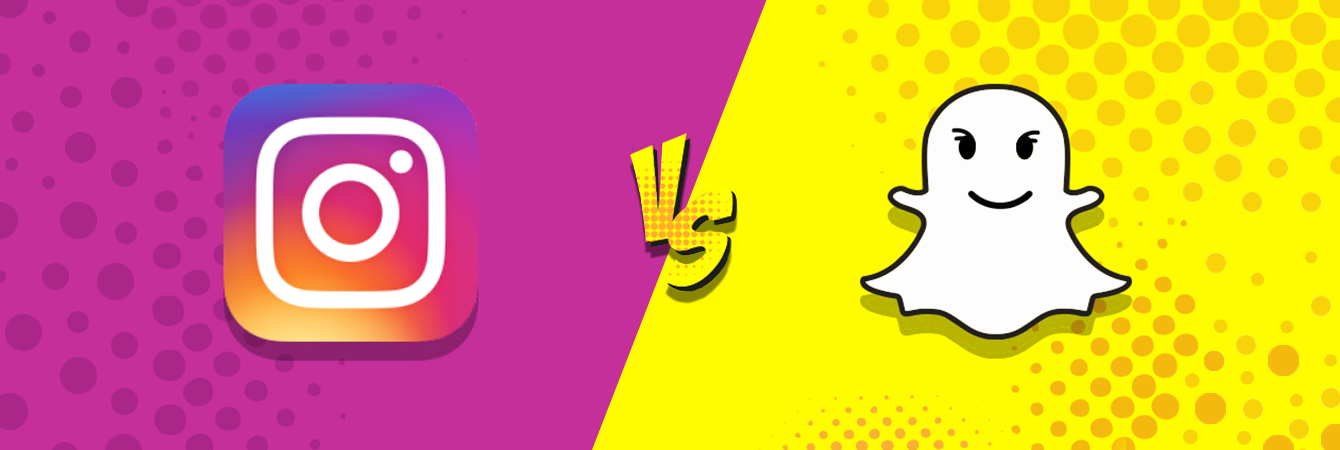Snapchat vs. Instagram Stories for Brands
Which media messaging platform is right for your brand's social media strategy? We measure up Instagram Stories and SnapChat, to explain which to use and why!
“Storytelling goes way back – before films, before television, even before books. We tell stories to educate ourselves about other cultures. We tell stories to capture truth and beauty. We tell stories to inspire one another, excite one another, empathise with one another; to thrill ourselves, to ground ourselves. Ultimately, we tell stories to engage one another.”
In 2013, Snapchat, the mobile social media app, brought storytelling to a whole new level with their “Stories” feature. The new addition to the previously ephemeral photo app – which upped everyone’s nudie game for several years – allows users to share 24-hour lasting videos and pictures of their everyday lives with their followers, who – on Snapchat – often tend to be friends and family.
This opened an entirely new way for businesses to expand their reach by quickly and creatively getting into the hands and heads of consumers. Businesses took up the challenge and began creating quirky, memorable, content no longer than 10-seconds long with one goal in mind: engage the people.
Unfortunately for Snapchat, however, the social media platform Instagram, known for its super simple, user-friendly layout and beautifully manicured posts, recently caught on to the “Stories” feature and rocketed past Snapchat’s user count at a seemingly lightening speed. Meanwhile, Facebook Stories has hardly taken off at all. Perhaps this is because Facebook already offers so many features, perhaps it is because they own Instagram and their users took to it first for their ten-second snippets. Whatever the reason, Instagram Stories seems to be eating up both Facebook and Snapchat’s Stories users.
According to a 2017 study by Tech Crunch, Snapchat user growth slowed down immensely, nearly 82%, when Stories hit the Instagram app. In 2017, it seems like Instagram is making Snapchat look like the app itself might become ephemeral. Here’s why.
Audience Demographics
Let me be straight up here: If your business is customer facing, then Instagram is a great option. That is unless you’re pretty much solely looking to reach flirtatious pre-teens. Snapchat’s got a young demographic, with 60 percent of users below the age of 25. And while Snapchat is a great place to post your bare-a**, Instagram’s got high-class.
Instagram is for artists, parents, youth, big and small businesses. It’s inclusive. Users often follow people other than close family and friends, and it’s not weird like it is on Snapchat to do so. The majority of Instagram users are above the age of 25. In fact, it even has a large user count above the age of 40. And this doesn’t take anything away from it. Actually, it adds to its lure. Remember when I said that storytelling is all about learning about different people and cultures and ways of living in order to engage others? That’s what Instagram embraces and that’s why it’s growing every day.

Instagram also allows you to have a permanent feed where you can build an aesthetic for your business and post things that really create your unique personality. People can watch your business develop and grow over time by skimming your feed, and that is something people today love. It makes you seem more accessible, personable, and less like a corporate monster.
I, personally, have varying interests. I’m an avid reader and I follow the New Yorker. I love seeing apes swinging from trees in the jungle on National Geographic’s Story. But I also follow brands, like Nike and Adidas, in order to stay up-to-date with the latest fashion trends and new products. And when I feel I haven’t gotten enough from their Stories, I’m able to check out their reliable feeds.
Features and Campaign Styles
Now let’s talk functionality. Functionality on Instagram is far more user-friendly than on Snapchat. Snapchat, much like Facebook, has way too much going on. Navigating around it is confusing and clumsy. Instagram features a very simple scroll for the feed and the Stories clearly sit at the top of your homepage, ready to be watched in one quick click. To view a Story, you simply click on the circular profile pictures at the top of the screen and scroll easily through. By tapping the left side of the screen you can jump forward and by tapping the right side of the screen you can jump back.
You can also freeze the video screen for closer looks, which is a feature that several businesses have used to their advantage in order to boost user engagement with their videos.
For example, businesses can use Instagram Stories to promote their products by encouraging users to freeze the frame to find special secret voucher codes. The story format is also great for product announcements, which allows brands to give their loyal fans sneak previews of new product releases. Kim Kardashian used her snapchat account to leak a new “dark green” colour of the Yeezy Boost, sparking speculation amongst fashionistas as to whether a new style was about to hit the shelves. Magazines thrive on this kind of content, as they are able to turn a commercial story into a “news” story, and potentially be the first to publish a viral post. In this case, Hypebeast pounced on the story and had an article up in minutes creating a disproportionate buzz around the product.

On both apps, you can mark location, add text, add filters, and comment. I’ll give it to Snapchat: their geofencing and face filter options are solid and plentiful. However filters are quickly becoming a kitsch stamp of days gone by, as users look back on their sepia smothered, pixelated shots from the early days of smartphones with growing disgust.
Hashtags are huge for advertisement, but on both apps they serve essentially no functional purpose on Stories. You can not click on them and be taken to a feed of photos and videos that also used that same hashtag. However, Instagram has mastered the hashtag usage for user’s feeds.
Paid Advertising
Justifying an investment on Snapchat might be difficult for your business because you can only rely on organic traffic – people who find you or already follow you. So to have specialists – videographers, designers – help create your content might only be draining your wallet in the end, because you can’t pay to boost your views.
Final Thoughts
What’s more to say? I’m even hesitant to say that Instagram is the new Snapchat, because actually they can’t really be compared. One allows you to send fleeting photos and post Stories. And that is great for businesses looking for a creative challenge. But the other is equally as challenging and allows you to build a personality, show your development over time, share glimpses of your everyday life, and post your most creative, powerful, engaging ten-second ads.
< span>If you are interested in trying out Instagram Stories or SnapChat marketing for your brand, get in touch with the Hello Social team for an obligation free consultation. We’ll be happy to hear about your business plan, and help you harness the power of these breakthrough post formats to stay ahead of the competition.







